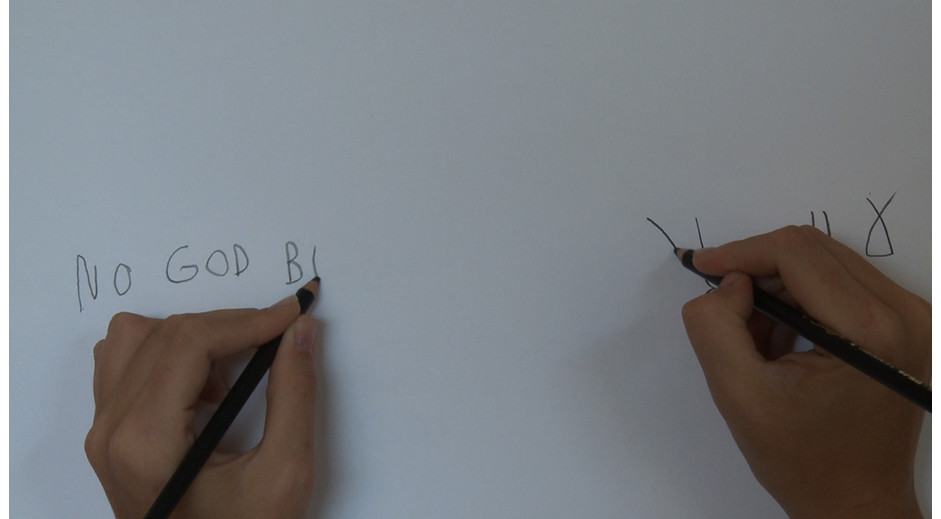
Translation, 2009
Performance / Video
videoprojection
Col, dur. 1’04’’
This writing performance inquires into the dynamics among language, the law and body. The starting point lies in the idea that language-and the law as linguistic expression-is able to represent and give expression to reality in a clear and comprehensive way. This entails a direct and mutual relation between that which is represented and the language that one uses to represent it, between words and things, between the law and facts. In alternative (way to look at this dynamic )a different stand point emphasizes the ever paradoxical dimension of language; that is the impossibility of language to represent faithfully the real. It is in this direction that one should think of the law as well as a linguistic expression unable to remain faithful to itself, always betraying itself. In this regard the first commandment provides us with a useful example of both a linguistic expression and its inability to absolve the very communicative and injunctive function that it involves. The simple transpose of the common biblical tradition from one language to another, from a form of writing to another, implies in its essential writing action a twofold effect of translation and betrayal: one hand betrays the other in a simple and simultaneous work of translation. The uniqueness that “(there is)no god but God” entails is thereby transgressed and fragmented in a series of signs following the asynchronic rhythm of the hands, a dance, rather than the invocation of meaning that the first commandment aspires to exert.